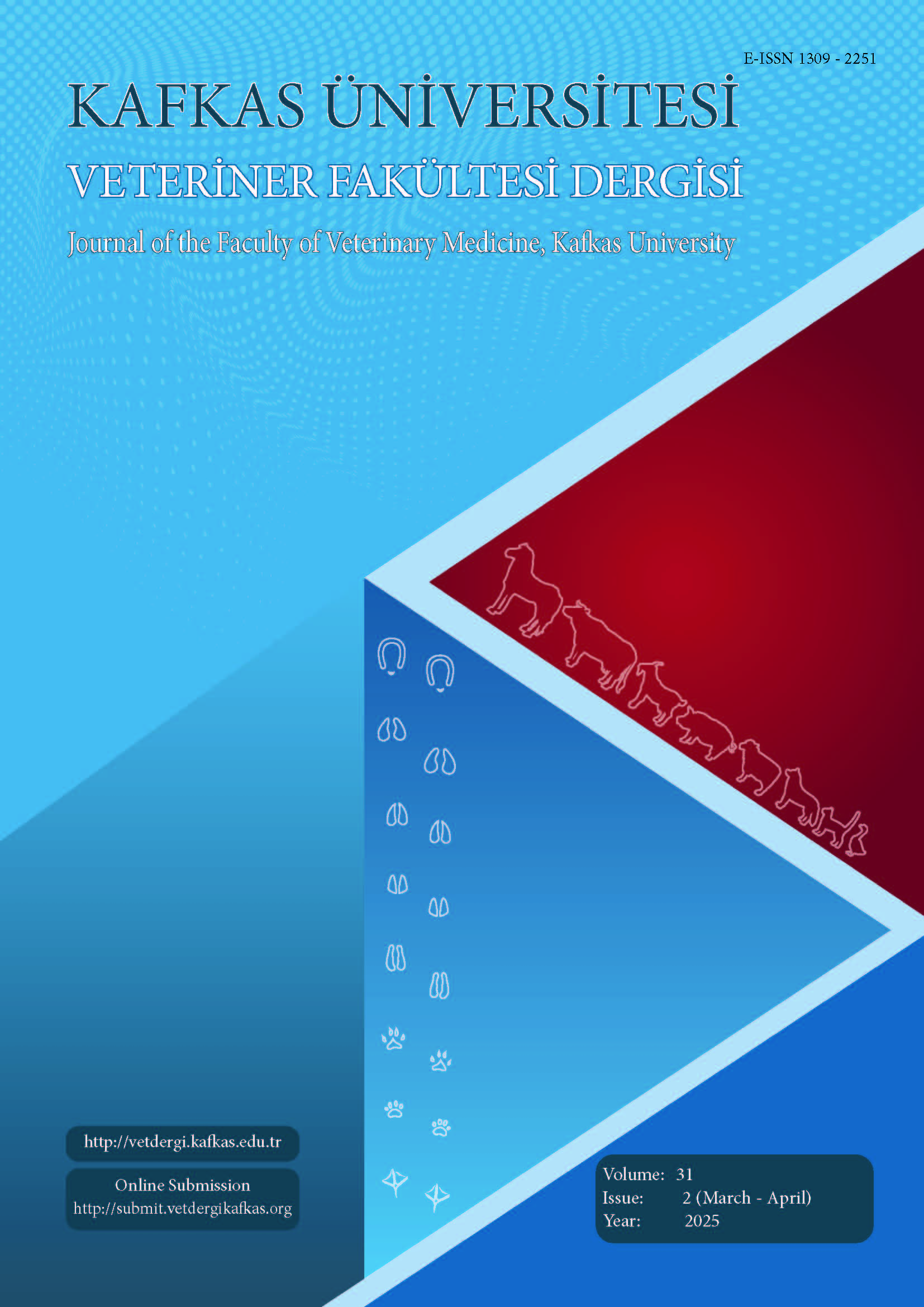
This journal is licensed under a Creative Commons Attribution-NonCommercial 4.0 International License
Kafkas Üniversitesi Veteriner Fakültesi Dergisi
2025 , Vol 31 , Issue 2
Survey of Anaplasma spp. in Ticks from Türkiye: First Molecular Evidence for A. phagocytophilum-like-1 and 2 Strains
1Fırat University, Faculty of Veterinary Medicine, Department of Parasitology, TR-23119 Elazığ - TÜRKİYE2Karamanoglu Mehmetbey University, Faculty of Health Sciences, Department of Nursing, TR-70100 Karaman - TÜRKİYE DOI : 10.9775/kvfd.2024.33171 In Türkiye, although there are several studies on Anaplasma spp. in vertebrate host, data on the occurrence of Anaplasma spp. in ticks are still lacking. This study aims to contribute to control strategies by providing new information on the epidemiology of Anaplasma species in Türkiye. A total of 2241 ticks divided into pools in which the presence of A. ovis and A. phagocytophilum was investigated by molecular methods. Maximum likelihood estimate (MLE) per 1000 ticks with 95% confidence intervals (CI) was used to compute infection rates. Overall MLE of infection rate was determined as 34.1 and 3.61 for A. ovis and A. phagocytophilum, respectively. While the infection rate for A. ovis varied from 9.21 (CI 2.81-21.3) in Haemaphysalis parva to 81 (CI 53.8-115) in Dermacentor marginatus, A. phagocytophilum varied from 2.21 (CI 0.11- 9.51) in Rhipicephalus bursa to 95.5 (CI 5.61-359) in Hae. concinna. A. phagocytophilum-like-1 and 2 strains in Turkish ticks were originally identified using sequencing and phylogenetic analysis based on the 16S rRNA gene. As a result, A. ovis and A. phagocytophilum could threat animal and human health in the region and strains of A. phagocytophilum should be taken into account when making a differential diagnosis for tick-borne diseases. Keywords : Anaplasma ovis, Anaplasma phagocytophilum like 1 and 2, PCR, tick, Türkiye.










